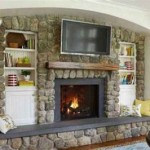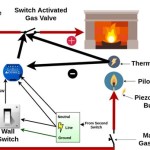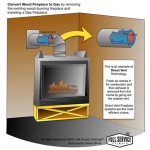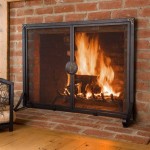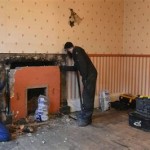Soapstone Wood Burning Fireplace Inserts: A Deep Dive into Efficiency and Aesthetics
Wood-burning fireplace inserts have become increasingly popular as a way to enhance the efficiency and functionality of traditional masonry fireplaces. Among the various materials used in their construction, soapstone stands out for its unique thermal properties and aesthetic appeal. This article explores the characteristics, benefits, installation, and maintenance considerations associated with soapstone wood burning fireplace inserts.
A wood-burning fireplace insert is essentially a self-contained stove unit designed to fit inside an existing fireplace opening. These inserts offer a more controlled and efficient combustion process compared to open fireplaces, significantly reducing heat loss up the chimney and improving overall heating performance. By providing a controlled air supply and a sealed combustion chamber, inserts maximize the amount of heat radiated into the room while minimizing emissions.
Soapstone, a metamorphic rock composed primarily of talc, is a popular material of choice for fireplace inserts. It offers a unique combination of heat retention, durability, and aesthetic appeal, making it a sought-after option for homeowners looking to upgrade their fireplace experience.
Key Points of Distinction: Soapstone's Benefits
Soapstone's popularity stems from a unique set of characteristics that contribute to its effectiveness as a material in wood-burning fireplace inserts. These qualities include exceptional heat retention, gentle heat radiation, and durability.
Superior Heat Retention: One of soapstone's most remarkable properties is its exceptional heat retention capacity. Due to its high density, soapstone can absorb and store a significant amount of heat energy. Once heated, it releases this heat gradually and evenly over an extended period. This prolonged heat radiation ensures a more consistent and comfortable room temperature, reducing temperature fluctuations often experienced with traditional fireplaces or other types of inserts. The prolonged heat also continues to radiate even after the fire has died down, providing residual warmth. This characteristic is particularly beneficial in colder climates where sustained heat is crucial.
Gentle, Radiant Heat: Unlike forced-air heating systems or even some metal fireplace inserts that can produce hot, dry air, soapstone emits gentle, radiant heat. Radiant heat warms objects and people directly, rather than heating the air. This results in a more comfortable and natural feeling warmth that is less likely to dry out the air or cause drafts. The even distribution of radiant heat minimizes hot spots and cold areas within a room. Many users find this type of heat significantly more comfortable and less irritating to the skin and respiratory system compared to convection-based heating.
Durability and Longevity: Soapstone is a durable and non-porous material that can withstand high temperatures and thermal stress without cracking or deteriorating. This makes it an ideal choice for fireplace inserts, which are subjected to significant temperature fluctuations during operation. A well-maintained soapstone fireplace insert can last for decades, providing reliable and efficient heating performance. The inert nature of soapstone also means it is resistant to chemical reactions and staining, further contributing to its longevity. Scratches and minor imperfections can often be sanded out, revitalizing the appearance of the stone.
Exploring the Functionality and Design Aspects
Soapstone fireplace inserts are not only efficient and durable, but also offer considerable design flexibility and functional advantages. These include the ability to control combustion, enhance safety, and present an aesthetically pleasing appearance.
Combustion Control and Efficiency: Soapstone inserts incorporate advanced combustion technologies, such as secondary air systems and catalytic converters, to ensure complete and efficient burning of wood. These technologies reduce emissions and maximize heat output, resulting in a cleaner and more environmentally friendly heating solution. By controlling the airflow and ensuring complete combustion, these inserts minimize the production of smoke, creosote, and other pollutants. This leads to cleaner burning, reduced chimney maintenance, and a lower environmental impact compared to open fireplaces.
Enhanced Safety Features: Fireplace inserts, including those made with soapstone, offer enhanced safety features compared to traditional fireplaces. The sealed combustion chamber prevents sparks and embers from escaping into the room, reducing the risk of fire hazards. Many inserts also include features such as safety glass doors and integrated chimney connectors to further improve safety. The controlled burning process also minimizes the risk of chimney fires by reducing creosote buildup.
Aesthetic Appeal and Design Flexibility: Soapstone has a natural, understated beauty that complements a variety of interior design styles. Its smooth, matte finish and subtle veining add a touch of elegance to any room. Soapstone fireplace inserts are available in a range of sizes, shapes, and designs, allowing homeowners to choose an insert that seamlessly integrates with their existing décor. The stone's natural color variations also ensure that each insert is unique, adding character and individuality to the space. Furthermore, the smooth surface is easy to clean and maintain, preserving its aesthetic appeal over time.
Installation and Maintenance Considerations
Proper installation and maintenance are essential for ensuring the safe and efficient operation of a soapstone wood burning fireplace insert. These processes involve careful planning, adherence to safety codes, and regular inspections.
Professional Installation: Installing a soapstone fireplace insert is a complex task that requires specialized knowledge and skills. It is crucial to hire a qualified and certified installer to ensure that the insert is properly installed and connected to the chimney. A professional installer will assess the existing chimney to ensure it is in good condition and meets the necessary safety codes. They will also ensure that the insert is properly sized for the fireplace opening and that all connections are secure and airtight. Improper installation can lead to safety hazards, reduced efficiency, and premature failure of the insert.
Chimney Inspection and Cleaning: Regular chimney inspections and cleaning are essential for preventing chimney fires and ensuring proper draft. Creosote, a highly flammable byproduct of wood burning, can accumulate in the chimney over time and pose a significant fire hazard. It is recommended to have the chimney inspected at least once a year, and cleaned as needed, by a qualified chimney sweep. Regular cleaning removes creosote buildup, improves draft, and reduces the risk of chimney fires. The frequency of cleaning will depend on the type of wood burned, the frequency of use, and the design of the fireplace insert.
Proper Wood Selection and Storage: Burning seasoned wood is crucial for optimal performance and reduced emissions. Seasoned wood has a lower moisture content than green wood, which results in a hotter, cleaner burn. Burning green wood produces more smoke, creosote, and pollutants, and reduces the efficiency of the fireplace insert. Wood should be stored in a dry, well-ventilated area to allow it to season properly. A general rule of thumb is to season wood for at least six months before burning. The type of wood also affects heat output and burning characteristics. Hardwoods, such as oak and maple, generally produce more heat and burn longer than softwoods, such as pine and fir.
Regular Maintenance: Regular maintenance of the soapstone fireplace insert is essential for ensuring its longevity and optimal performance. This includes cleaning the firebox, inspecting the door seals, and checking the air controls. The firebox should be cleaned regularly to remove ash and creosote buildup. Door seals should be inspected periodically to ensure they are airtight, as leaks can reduce efficiency and increase emissions. Air controls should be checked to ensure they are functioning properly and allowing for proper airflow. Following the manufacturer's recommendations for maintenance will help to prolong the life of the insert and ensure its continued efficient operation.

5 Great Reasons To Choose A Soapstone Wood Stove We Love Fire Hearth

Clydesdale Hearthstone Stoves

Hearthstone Soapstone Brick 1 0000 101 Friendly Fires

Hearthstone Morgan Soapstone Wood Insert Traditional Living Room Dc Metro By Mace Energy Supply Houzz Ie

Most Popular Fireview Soapstone Wood Stove Woodstove

Wood Inserts Maple Mtn Fireplace

Commercial Fireplace Firepit Installation Repair Service Soapstone Wood Stove Corner

Wood Stoves Weaver S Stove Patio Erie Pa

Hearthstone Heritage Soapstone Series Wood Stove Mountain Home Center

Fireside Franklin Soapstone Gas Stove Woodstove

